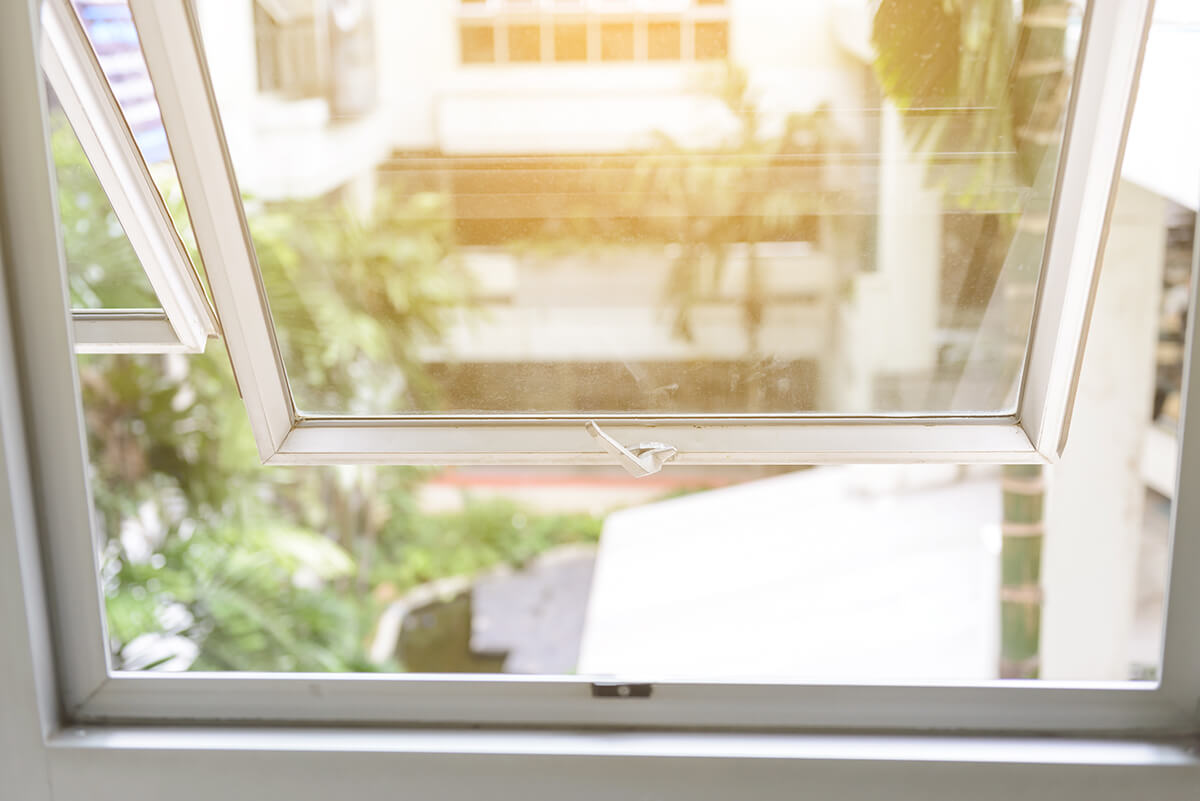
Versatile and stylish, awning and casement windows can enhance virtually any home’s design. Letting in lots of light, improving airflow and providing unobstructed views of the landscape, they have many advantages. But, whether you’re looking to replace your current windows, you have existing casement windows in your home or you recently moved into a newly built apartment which has awning windows, the question of correctly screening them can seem a challenge.
One of the best ways to ventilate your home, awning and casement windows are extremely popular and have experienced a modern resurgence. Traditionally screening them has been quite difficult and due to this, many people shy away from installing them in their home. However, this doesn’t have to be the case.
Advantages of awning windows

Awning windows are great for a number of reasons. They’re excellent at boosting air circulation and can remain open even when raining. This is because, unlike traditional casement windows, awning windows are hinged at the top, opening outwards and upwards. This feature is perfect for homes in tropical zones or areas with frequent rainfall as the glass stops the rain from entering your home. Along with improved ventilation, you’ll get to enjoy the peaceful sound of pattering raindrops!
They’re also exceptionally charming, adding character to your home. Plus, they can be placed anywhere and are still very accessible, even above mantle places, because they open from the bottom.
There are a number of other advantages to awning windows. For example, because they can be fitted high on a wall or low to the ground, they protect your privacy, while still providing good airflow and letting sunlight in. Additionally, they are safe for homes with children as it is part of the Australian Safety Standards to have safety restrictions and locks in place for all windows.
Choosing casement windows

The traditional style of casement window is a side-hung frame, hinged on either side, with the frame opening outwards. Like awning windows, they provide exceptional ventilation as they can be completely open, or open in the direction of the breeze to maximise airflow – this is especially true if two casement windows are fitted side by side, opening in opposite directions.
They’re also a wonderfully charming option and can either be a frame with just glass, or can have timber panelling. If you choose to have fewer muntins, you’ll have an unobstructed view even when they’re closed! However, unlike awning windows, casement windows will still let the rain in when it falls. This is due to the added advantage that casement windows open more than most other windows, swinging completely open so you can enjoy the outdoors from inside your home.
Casement windows are a popular choice as they provide a modern, clean look to a home and give a facelift to both the interior and exterior design. They also have hook shaped locks embedded into the frame making them very safe for homes with young children and making your home more secure as they’re extremely difficult for intruders to penetrate. As far as energy savings, casement windows provide a tight seal, performing better than double hung windows, which will help to minimise cold and heat transfer.
The challenge of screening
Of course, one difficulty that arises when it comes to awning and casement windows is the ability to use screens. Without sounding obvious, because the windows open outwards, the screens need to be placed on the inside of the frame. Well then, how do you actually open the window?
If your windows are opened using a winder, great! Pop a fly screen and away you go. However, if you need to open the window by pushing, well then putting in a screen limits your access to the handle.
Of course, there are some options.
For some, the temporary fly screens are a satisfactory option. These can be used when and where needed. This means that during winter, if the window is less likely to be opened, the screen doesn’t have to be blocking the glass. However, these can be tricky to use, fiddly, and sometimes have awkward ways to fix them to the frame of the window.
Using retractable screens
A great option in these situations are retractable screens (sometimes referred to as roll-up screens). Sitting at the top of the window frame, the mesh of the screen is housed in a cassette, which simply rolls down when needed and retracts when not in use. The best way to think of it is as a roller blind, but instead of fabric, down rolls some screen mesh.
Read more about the benefits of retractable fly screens and how they improve your home.
The wonderful thing about retractable screens for awning and casement windows is they blend right into the window frame, sometimes even sitting within it, so when glancing at the window, you probably won’t even know they’re there.
Plus, they work both vertically and horizontally, so they’re perfect for either awning or casement windows. The fact that they simply disappear means you can easily access the window to open, close and clean it.
Artilux specialises in retractable screens, which are especially well suited to different window openings. Get in contact with an Artilux expert today to discuss your screening needs.


